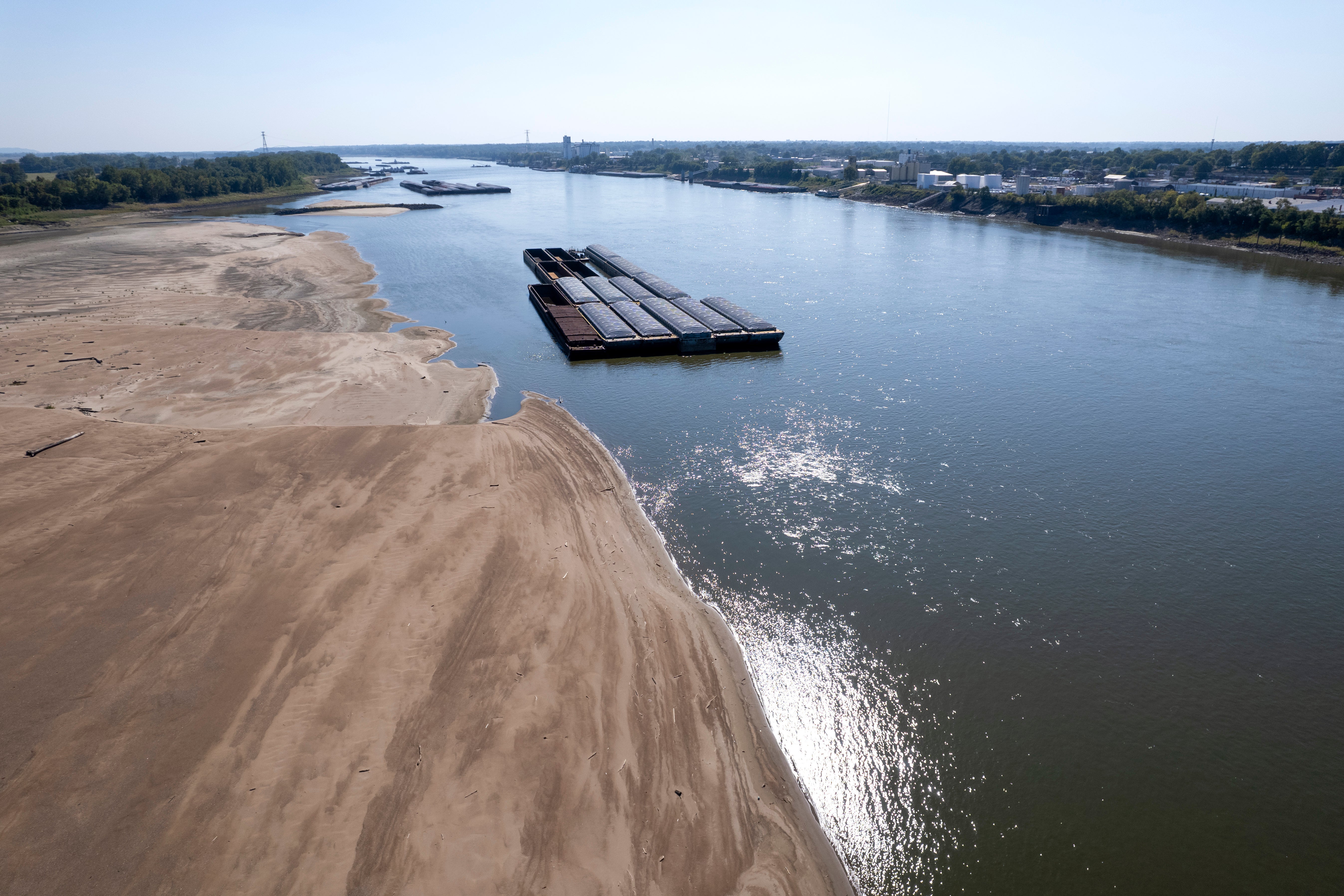The Mississippi River is running low again. It’s a problem for farmers moving beans and grain
The water level of the Mississippi River is unusually low for the third straight year, forcing barge companies to put limits on how much cargo they can carry and cutting into farm profits

Your support helps us to tell the story
From reproductive rights to climate change to Big Tech, The Independent is on the ground when the story is developing. Whether it's investigating the financials of Elon Musk's pro-Trump PAC or producing our latest documentary, 'The A Word', which shines a light on the American women fighting for reproductive rights, we know how important it is to parse out the facts from the messaging.
At such a critical moment in US history, we need reporters on the ground. Your donation allows us to keep sending journalists to speak to both sides of the story.
The Independent is trusted by Americans across the entire political spectrum. And unlike many other quality news outlets, we choose not to lock Americans out of our reporting and analysis with paywalls. We believe quality journalism should be available to everyone, paid for by those who can afford it.
Your support makes all the difference.The water level of the Mississippi River is unusually low for the third straight year, forcing barge companies to put limits on how much cargo they can carry and cutting into farm profits.
It was just two months ago that much of the Mississippi River was above flood stage north of St. Louis. Since then, the river level has dropped steadily. The area south of St. Louis has been hit especially hard, mirroring low-water concerns that began around this same time of year in both 2022 and 2023.
As part of the fallout, barge companies are forced to limit the soybeans, grain and other cargo they carry to prevent barges from potentially getting stuck. That means less profit for farmers.
About 60% of U.S. grain exports are taken by barge down the Mississippi to New Orleans, where the corn, soybeans and wheat is stored and ultimately transferred for shipment to other countries. It’s an efficient way to transport crops — a typical group of 15 barges lashed together carries as much cargo as about 1,000 trucks.
With cargoes limited, the U.S. Department of Agriculture's most recent Grain Transportation Report showed that for the week ending Aug. 31, 480,750 tons of grain moved on barges — a 17% drop from the previous week.
Meanwhile, costs were up sharply. Freight rates originating in St. Louis were 8% higher than the same period last year and up 57% compared to the three-year average. Freight rates originating in Memphis were 10% higher than last year, and 63% higher than the three-year average.
Consumers won't necessarily feel much impact, but farmers will, said Mike Steenhoek, executive director of the Iowa-based Soy Transportation Coalition.
“When you’ve got a transportation cost increase in any industry the question is, ‘Do I pass those costs onto the customer in the form of a higher price?’” Steenhoek said.
But farmers usually don’t have that option because their product that moves on barges is being sold internationally. If American soybean prices rise, the foreign buyer can purchase from another country, Steenhoek said.
It was just July when the Mississippi River reached major flood levels in places like Iowa, Illinois and Wisconsin, forcing some people to get around by boat.
All that water flowing down from the upper Mississippi River was offset by drought in states along the Ohio River, which feeds into the Mississippi at Cairo, Illinois. Rainfall in places like Ohio and West Virginia was minimal throughout the summer, worsening in August.
“That drought is growing,” Michael Clay, chief of the Hydraulics and Hydrology Branch of the Corps of Engineers’ office in Memphis, Tennessee, said at a news conference Wednesday. As a result, the Mississippi River south of Cairo is just a few feet higher than the record low levels reached in several places last year — and dropping.
Donny Davidson Jr., a deputy engineer for the Memphis District of the Corps, said dredging operations are being moved around on a frequent basis as worrisome spots pop up.
“Over the last few years, we've really got very good at looking ahead and applying those resources in a very strategic manner,” Davidson said.
Clay said Hurricane Francine is expected to bring several inches of rain to much of the lower Mississippi River, including up to 4 inches of rain in Memphis in the coming days.